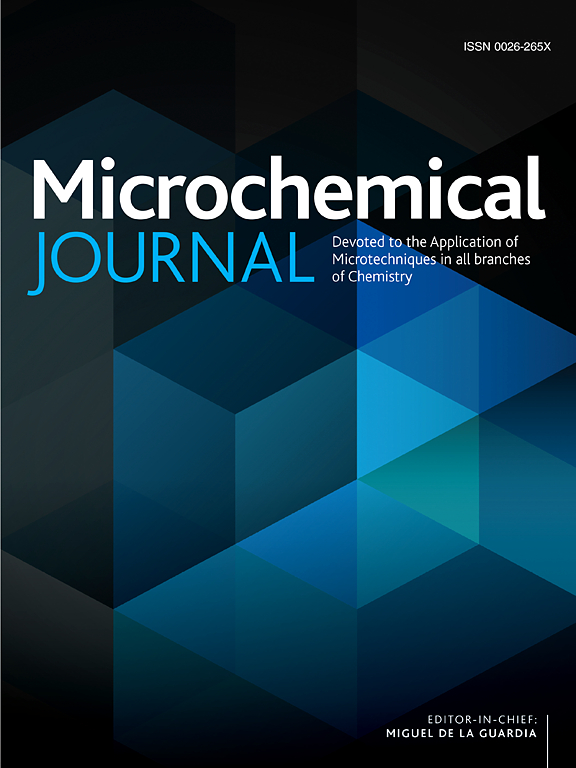Robust SPE-UHPLC-MS/MS method for determination of multiple categories of antibiotics with broad polarity range in surface water
IF 4.9
2区 化学
Q1 CHEMISTRY, ANALYTICAL
引用次数: 0
Abstract
Antibiotics, as a typical class of emerging contaminants in the environment, are frequently detected at trace concentrations in various water samples. The chemical properties of antibiotics exhibit significant diversity, encompassing variations in molecular structure, amphoteric behaviour, and polarity. These differences present substantial challenges in developing universal detection methods for comprehensive monitoring of antibiotic contaminants. Therefore, it is imperative to develop more targeted, efficient, and sensitive analytical techniques. In this study, we develop a solid-phase extraction coupled with ultra-performance liquid chromatography-tandem mass spectrometry (SPE-UHPLC-MS/MS) method. This method enables the simultaneous determination of 69 antibiotics divided into seven categories (tetracyclines, quinolones, sulfonamides, β-lactams, macrolides, lincosamides, and chloramphenicols) in surface water. The method achieved limits of detection (LOQs) ranging from 0.002 to 1.71 ng/L. The standard curves of the target compounds exhibited excellent linearity, with correlation coefficients (r2) > 0.995, and most spiked recoveries fell within the range of 40.4–149 %, with relative standard deviations (RSDs) below 15 %. Using this method, 19 surface water samples from Qiantang River Basin, Zhejiang Province, China were analyzed, with 29 out of 69 analytes being detected (the total concentrations ranging from 5.69 to 131 ng/L). This method provides a reliable and robust analytical approach for the comprehensive monitoring of antibiotic contaminants in environmental water, offering critical insights for pollution control and water quality management efforts.

求助全文
约1分钟内获得全文
求助全文
来源期刊

Microchemical Journal
化学-分析化学
CiteScore
8.70
自引率
8.30%
发文量
1131
审稿时长
1.9 months
期刊介绍:
The Microchemical Journal is a peer reviewed journal devoted to all aspects and phases of analytical chemistry and chemical analysis. The Microchemical Journal publishes articles which are at the forefront of modern analytical chemistry and cover innovations in the techniques to the finest possible limits. This includes fundamental aspects, instrumentation, new developments, innovative and novel methods and applications including environmental and clinical field.
Traditional classical analytical methods such as spectrophotometry and titrimetry as well as established instrumentation methods such as flame and graphite furnace atomic absorption spectrometry, gas chromatography, and modified glassy or carbon electrode electrochemical methods will be considered, provided they show significant improvements and novelty compared to the established methods.
 求助内容:
求助内容: 应助结果提醒方式:
应助结果提醒方式:


